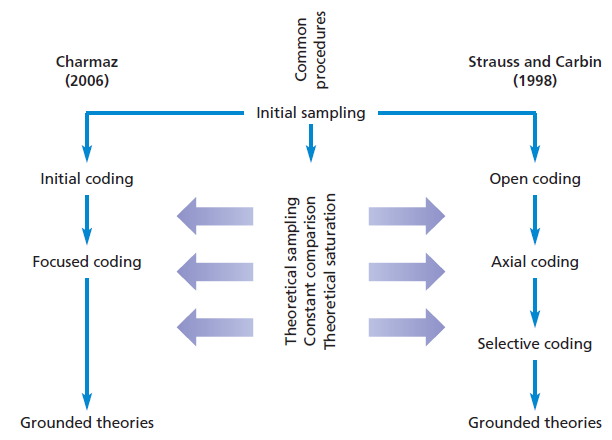
What is the objective of any corporation or firm in business world? The obvious answer is that the objective of any business is to maximize its revenues and to make money for its shareholders. It is a very important objective and if a business corporation fails to achieve that objective of making money for shareholders its share prices will go down, it will have a bad reputation and unless radical changes are implemented in order to improve things the business corporation will not be around any more- it will go bankrupt. Corporate Social Responsibility- what is it? As Wikipedia.org defines it “Corporate social responsibility is an expression used to describe what some see as a company’s obligation to be sensitive to the needs of all of the stakeholders in its business operations”. Company’s stakeholders are its employees, customers, suppliers, community organizations, subsidiaries and affiliates, joint venture partners, local neighborhoods, investors, and shareholders (or a sole owner if the case is). “A business that accepts Corporate Responsibility will be prepared to be responsible for and willing to justify its actions. It will also consider the impact of its actions on a variety of individuals and groups, both inside and outside of the organization”. (Hall, Jones, Raffe p.789) A more simplified definition of CSR in this report is how businesses manage their operations to produce positive impact on society. Today, in a highly competitive business world it is extremely important for companies, especially big corporations to build up reputation of a company which cares about nature, problems of society in present day, environmental issues and which deals fairly with its customers, suppliers and employees. For example, a mobile phone business will try to provide as wide coverage as possible for its customers. However, in order to do so, it is likely…

I have benefited immensely from the in many aspects, including developing my personal skills. The skills that I acquired during the course which I appreciate the most include communication skills, cultural awareness, teamwork, and time management. McKenna (2004, p.664) relates the management skills to the behaviours and identifies them to be sets of actions performed by an individual that lead to a certain objectives Before starting my degree I did not consider communication skills to be as much of importance as I consider it now. My communications skills have improved during the course due to two reasons. First, on academic level, through cases studies and other materials I was pointed to the importance of communication skills for a person in social, family, and especially work settings. Second, I was taught about the importance of communication skills in a practical way. I can illustrate my statement in the following way. There were some lecturers whom I used to see regularly within and around the college but was not impressed by them in any way to put it mildly. However, once they started teaching us my opinions about them changed dramatically in a positive way due to their teaching styles and mainly, communication skills, and I know that it was not only me who has experienced that. Today I know about the importance of communication skills and also I know that once I return to the full-time work life my carrier would benefit due to my communication skills. Another personal skill which I developed during the course and consider to be important for my future career is my cross-cultural skills. Before starting the course I did not think much about the influence of culture on people’s behaviour and mentality. During the course through interacting with representatives of different cultural backgrounds and learning…
By John Dudovskiy
Category: Personal reflection & development

Efficient special events are those that leave long lasting positive memories in audience and achieve their objectives as an event for organizers and other stakeholders. The actual event may last only few hours, but in order to organize them sometimes preparations need to be undertaken starting from months, or even years in advance, considerable amount of funds, and effort from many people are required to ensure the efficiency of the event. And the success of events largely depends on how competently they were managed. Special events have some fascinating elements incorporated in them that you can remember them during the whole remaining period of your life. Many of us can remember witnessing such an event, be it a festival, sport competition, celebration of a national holiday, or other, that we remember them with warm feelings and nostalgia, and look forward to experience it again. “The British Conference Market Trends Survey 2001 estimates that conferences and meetings are worth £7.3 billion annually. Exhibitions and trade fairs are calculated to be worth £2.04 billion annually, excluding the value of business transacted on them. This means that exhibitions are the fifth largest market medium, attracting 11 per cent of media expenditure in the UK (British Tourist Authority, 2006)” (Raj et al, 2008, p.4) For an event to be memorable and entertaining for the audience and to achieve its objectives, it has to be efficiently managed by competent managers. Event management differs in many aspects from managing a business unit in many other industries in a way that it requires from the manager a high degree of creativity, preparedness to deal with many unforeseen circumstances, and a high level of enthusiasm. Definitions There are many authors who have contributed to the subject of special events and there are many definitions proposed by…
By John Dudovskiy
Category: Industry Analysis

Product placement is a marketing strategy that has accidentally evolved a few decades ago. Nevertheless, the efficiency of the product placement has been spotted by professionals and since then various companies engage in product placement activities in various levels with varying efficiency. One of the main differences of product placement from other marketing strategies is the significance of factors contributing to it, such as context and environment within which the product is displayed or used. Implementing an efficient marketing strategy is one of the essential conditions for a product to be successful in the marketplace. Companies may choose different marketing strategies including advertising, channel marketing, internet marketing, promotion, public relations, product placement and others. Each of one of these marketing tools has its advantages and disadvantages and the rationale behind the choice among these tools relates to the type of the product, type of the market and the marketing strategy of the company. Product placement among them is one of the marketing strategies which have evolved recently. In product placement a product is placed in a movie or television show in exchange for payment of money or other promotional consideration by the marketer (Gupta & Gould, 1997). According to Cowley& Barron (2008, p.91), as taken from Parrish, auto industry has been among the very first industries to use product placement as a marketing strategy. One of the automobile companies which use product placement strategy heavily to promote its cars is Aston Martin – a British manufacturer of luxury cars. There have been many researches on the subject of product placement undertaken by different authors at different points of time. The use of product placement as an effective marketing strategy has intensified mainly during the last three decades. According to DeLorme& Reid(1999), until recently studies on product placement have been generally…

There are no arguments among business researchers and practitioners about the importance of providing excellent customer service to customers. Because of high level of competition in almost every industry, the customer bargaining power has increased significantly, and customers can easily turn to the competitors of the business if they are not satisfied with the level of customer service, as well as, any other aspect of the business. Today business are totally aware of the importance of the customer service, therefore try to create competitive edge for the company by providing excellent customer service and make considerable investments for these purpose by employing competent people to deal with their customers and training them on a regular basis. People who are customers of businesses also deal with various public organisations and agencies for a varied range of purposes being members of society. Because people are used to the high level of customer service as a result of dealing with many businesses regularly, they also expect the same level of customer service from public sector organisations as well (Agness, 2010) The principles operations of public sector organisations are based upon are different from the principles of business entities on the fundamental level. And primarily, this difference comes from the objectives of these two kinds organisations. While the main objective of any business entity is profit maximisation and they know that this objective can only be achieved when customers are satisfied with the level of the service they are receiving, the objectives of public sector organisations are to perform some functions within society mechanism, which is often not related to profit maximisation. Public Sector Customer Expectations The issue of increasing customer expectations became only urgent with after the level of competition intensified in many industries due to technological advancement, globalisation, internet and other…
By John Dudovskiy
Category: Customer Services

The history of the global fast food company started with two brothers Richard and Maurice McDonald opening the very first McDonald’s restaurant in California, USA in 1940. Franchising began for McDonald’s in 1953, and four restaurants were opened in the same year. The joining of Ray Kroc in 1954 proved to be a turning point for the company and McDonald’s began franchising their restaurant outside of their hometown as well. The sale of 100 millionth hamburger for McDonald’s in 1958 was followed by the opening of 100th restaurant the year after. Ray Kroc buys McDonald’s from founding brothers in 1961 and after two years the company sells its billionth hamburger and opens its 500th franchise in Ohio. Initial overseas McDonald’s opened in Canada and Puerto Rico in 1970. In 1971 McDonald’s expanded to Japan, Netherlands, Germany and Australia. McDonald’s revenues reached $1 billion and 2000th restaurant opened in 1972. And it was followed by the invention of Quarter Pounder and Egg McMuffin and opening franchise in Stockholm. The years of 1974 and 1975 witnessed the expansion of McDonald’s to the United Kingdom, opening of the first Ronald McDonald House and introduction of Drive-Thru. Also, the company expanded to Japan and Singapore and Happy Meal was introduced during the remaining part of the 1970’s. During 1980’s McChicken sandwich and Chicken McNuggets were introduced and restaurants were opened in Philippines, Malaysia, Italy, Mexico, Belgrade, Yugoslavia, Budapest and Hungary. McDonald’s continued worldwide expansion during 1990’s opening shops in Moscow, China, Africa, Morocco, Saudi Arabia, South Africa, Belarus, Peru, India and Georgia. Difficult time began for McDonald’s in 2000’s starting with the launch of a book called Fast Food Nation written in 2001 by Eric Schlosser which criticised McDonald’s for selling unhealthy food. It partially resulted in the first quarterly loss in company’s…

Today the fast food industry is booming in many countries of the world and in the UK due to a range of reasons including their relative cheaper price, convenience of purchasing and consuming, and lack of time of people for “proper” dining. Although fast food does provide value for consumers in terms of convenience, price, and in some cases taste, these values cannot compensate the damage to the health of consumers fast food does. The fast food culture is well embraced by the population in UK. Brown (2005, p.3) informs that fast food industry in UK has an annual turnover of £7.2 billion, earned by serving 1.5 billion meals a year in 20000 outlets, employing nearly 200000 staff. The UK fast food market is reported to be “double the size of Germany, and three times the size of the French Market” (Humphries, 2010). According to Wikipedia (online, 2010), UK was the country with the largest number of fast food restaurants per person worldwide with Australia in second, and the United States in third places in 2008, and 25 per cent of all fast food restaurants were situated in England alone. A study in the same year found that “45% of people in UK were more likely to agree that they liked the taste of fast food to give it up” (Fastfoodnation-online, 2010). Moreover, recent financial crisis has fuelled 8 per cent growth in fast food industry in UK (Kuhn, 2009). Fast food menu in UK mainly includes burgers, pizza, chicken, sandwiches, fish and chips, curry, Chinese takeaways and others. Main players in UK fast food industry are McDonald’s, Burger King, Pizza Hut, Pizza Express, KFC, Chicken Cottage, Subway, Starbucks Coffee, Costa, Pret A Manger, EAT, Coffee Republic, Mr Cod and others. The Food and Drink Innovation Network (online, 2010) 95…
By John Dudovskiy
Category: Industry Analysis

HTC Corporation (formerly known as High Tech Computer Corp.) is a Taiwan-based smartphone manufacturing company engaged in design, development, manufacturing and sales of mobile computers, personal digital assistant phones, touch phones and smart phones and offers its products in Europe, Asia pacific, North and Latin America, Africa and Middle East (Bloomberg, 2010). The company has gained a reputation in terms of innovation related to the features of their products as well as their design The Evolution of HTC HTC was founded in 1997 by three business people and technology enthusiasts Cher Wang, HT Cho and Peter Chou. The founders took the roles of Chairwoman, Director of Board and Chairman of HTC Foundation, and President and CEO respectively. At the initial period of business HTC was mainly involved in partnerships with companies like Compaq, Dell and HP designing and building PDAs (personal digital assistants) for them. The most innovative and acclaimed products of these brands HTC was closely involved in include Compaq iPAQ, Treo 650, O2 XDA, and Orange SPV (Hi, we’re HTC, 2010) The company was introduced to the public as an independent brand starting from June 2006, and manufactured its first own brand product HTC Touch, which is claimed to be by the company a first finger-friendly touch-screen smartphone in June 2007. Today HTC boasts with its popular products as Touch Diamond, Hero, HD2, HD Legend, and Desire, and has been ranked by Business Week as the second best performing technology company in Asia in 2007, and third place in Business Week Global listing in 2006. Internal and External Factors that Affected the Evolution of HTC There are set of internal and external factors that have affected to the evolution of HTC. One of the main internal factors that have affected the evolution of HTC does relate to…
Regardless of type of the business the strategy of running it has changed dramatically in a way that nowadays, the increasing role and impact of internal and external factors to the business have to be taken into account. This fact produces extra challenges for strategic level managers, because they need to focus on creating competitive edge for the business, at the same time when globalization affects all aspects of the business including its strategic direction, supply-chain, value-chain, competitive advantage etc. While this new business environment is seen as challenging by some business executives, others have transformed challenges globalisation offers into competitive advantages of their businesses.

Theoretical sampling can be defined as “the process of data collection for generating theory whereby the analyst jointly collects, codes and analyses his data and decides what data to collect next and where to find them in order to develop his theory as it emerges”[1]. In simple terms, theoretical sampling can be defined as the process of collecting, coding and analyzing data in a simultaneous manner in order to generate a theory. This sampling method is closely associated with grounded theory methodology. It is important to make a clear distinction between theoretical sampling and purposive sampling. Although it is a variation of the purposive sampling, unlike a standard purposive sampling, theoretical sampling attempts to discover categories and their elements in order to detect and explain interrelationships between them. Theoretical sampling is associated with grounded theory approach based on analytic induction. Theoretical sampling is different from many other sampling methods in a way that rather than being representative of population or testing hypotheses, theoretical sampling is aimed at generating and developing theoretical data. Theoretical sampling may not be necessary for bachelor level or even master’s level dissertations since it is the most complicated and time consuming sampling method. However, theoretical sampling is well suited to be applied for PhD-level studies. Application of Theoretical Sampling: an Example Theoretical sampling cannot be planned in a detailed manner before primary data collection process. As it is illustrated in figure below, theoretical sampling is systematically applied throughout the research process up to the generation of the grounded theory. Theoretical sampling and generation of grounded theory[2] Let’s illustrate the application of this sampling method by using a basic example. Imagine your dissertation topic is the following: The impact of the Brexit on emotional wellbeing of consumers in Birmingham The application of semi-structured interviews and theoretical sampling to…
